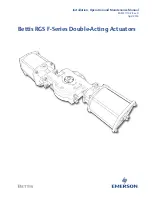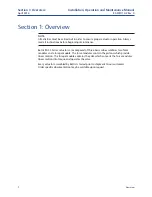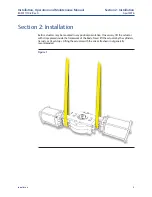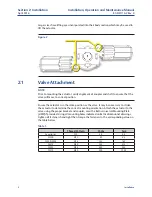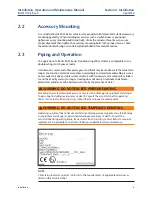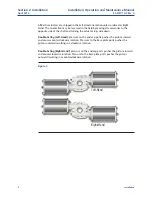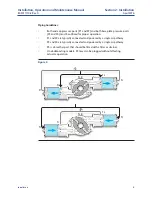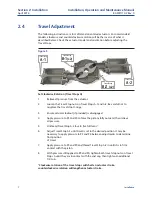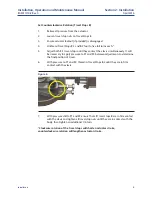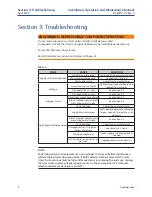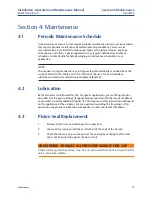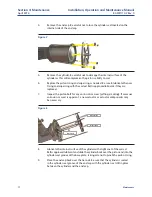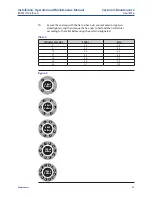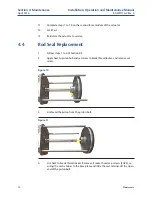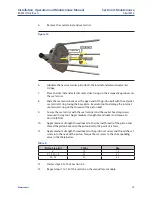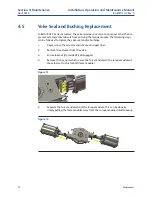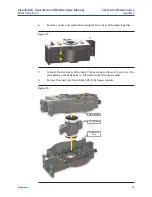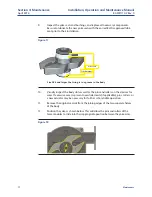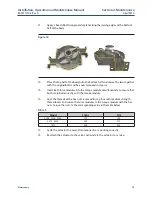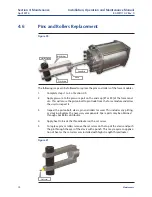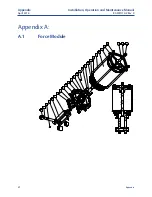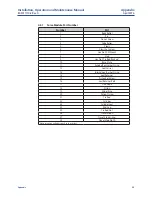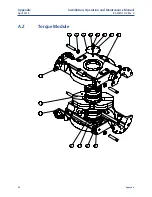
April 2016
Installation, Operation and Maintenance Manual
RGS011110-2 Rev. 0
9
Section 3: Troubleshooting
Troubleshooting
Section 3: Troubleshooting
WARNING: DEPRESSURIZE COMPONENTS PROPERLY
Do not remove/loosen tie rod nuts unless cylinder is fully depressurized.
Components may exit the actuator dangerously if disassembly is attempted under pressure.
Ensure that all process lines are safe.
Read all maintenance instructions before starting work.
Table 2�
ISSUE
CAUSE
SOLUTION
Irregular or Stuttering Stroke
Supply pressure too low
Verify operating pressure is correct
Worn internal components
See Section 4.3 to 4.6
Damaged or valve
Consult valve manufacturer
Leakage
Travel stop nut is not tight
Tighten travel stop nut with pressure
relieved from actuator
Damaged Piston O-ring
See Section 4.3
Damaged cylinder seals
See Section 4.3
Improper Travel
Travel stops are not correctly set
See Section 2.4
Internal cylinder contaminants
preventing normal stroke
See Section 4.3
Damaged valve
Consult valve manufacturer
Operating/Stroking too slowly
Supply pressure too low
Verify operating pressure will supply
torque needed to operate valve
correctly
Internal cylinder contaminants
preventing normal stroke
See Section 4.3
Damaged valve
Consult valve manufacturer
Damaged seals or O-rings caus-
ing loss of pressure
See Sections 4.3 to 4.6
Damaged supply lines
Inspect supply and lines replace as
needed
Limitation of accessories or
port size
Upgrade accessories or port size
NOTE:
Performing piston seal replacement on one cylinder at a time will allow maintenance
while retaining travel stop adjustment. If both cylinders will be removed at the same
time, the travel stops must be fully unthreaded prior to removing the end caps. Leaving
the travel stops in place will put spring pressure on the end cap when it is removed,
which could cause serious injury or death.

